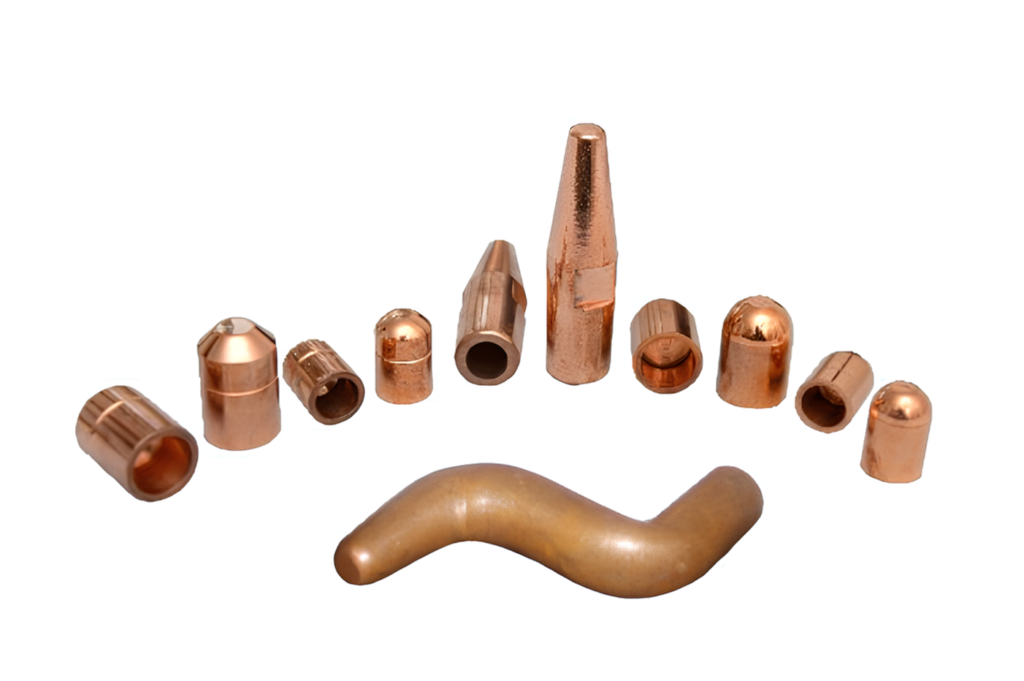In today’s highly competitive manufacturing landscape, procurement and production teams face constant pressure to cut costs—while maintaining performance.
Current Standard:
Most factories rely on Cu or CuCr spot‑welding caps. But there’s a better, more efficient alternative: Copper–Zirconium (CuCrZr) alloy. One of the reason CuCrZr alloys are effective in these demanding applications is their ability to undergo precipitation hardening — a heat treatment process that significantly improves their performance. In addition this alloy retains hardness at elevated temperature upto 650 degree C. whereas normal copper loose above 175 degree.
Other reasons as under.
Why Copper–Zirconium Alloy?
This alloy offers excellent electrical conductivity (min 75 % IACS) and enhanced hardness (~75 HRB), enabling lower welding currents and reduced heat input, which:
- Minimizes mushrooming
- Prevents sticking (especially on coated materials)
- Cuts energy usage by 10–20 %
- Lowers dressing time and extends electrode life
- Reduces weld-force and splatter
- Shortens downtime
- Enables smoother, faster start‑ups
- Boosts productivity
Switching to Copper–Chromium – Zirconium alloy welding caps means:
- Lower operating costs (less current, fewer dressing cycles)
- Improved quality (less sticking, consistent welds)
- Minimal disruption (longer tip life means fewer stoppages)
- Optimal ROI—premium performance without premium pricing
Interesting ?
Even if a supplier is supplying CuCrZr alloy but precipitation hardening is not done by right method, material looses hardness much earlier
Senor manufacturers CuCrZr electrode caps with right precipitation hardening, best suited material for spot welding caps for both coated & non-coated sheets.
While the upfront cost is slightly higher it is offset by superior performance and long-term durability.
Our Sales team would be glad to share more information against your email : compo@senormetals.in


